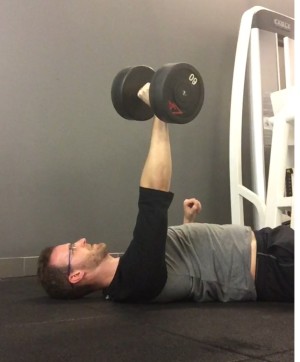Core training is the topic that never gets old. We love flat abs and we also recognize that it is good for our aching backs. What we don’t always understand is that flat abs don’t necessarily equate to strong cores, and by extension, flat abs don’t mean our backs do not ache.
First let’s look very briefly at what commonly causes back problems. The back consists of several structures that can lead to discomfort and pain. The spine houses some typically damaged structures which are the vertebrae and the inter-vertebral discs. The so called “slipped disc”, or herniation, is when the disc itself is damaged and effectively presses on surrounding nerves. The pelvis can also contribute to general back discomfort via an important joint called the sacroilliac, or SI joint, of which there are two. The reason that your inter-vertebral discs and SI joints are at such risk is that they are major load bearing structures. The pelvis and lower spine are the central base that your body is built on. The pelvis and low back are stuck between two heavy loads at all times – the weight of your upper body and the forces generated from ground contact when you walk or run. In order to protect against low back pain the core needs to be able to stabilize this center and its structures efficiently and effectively.
Training your 6 pack is not the most efficient and effective way to achieve this much needed stability because it is the muscle that is furthest away from the structures mentioned above. We need to activate and strengthen the musculature that is closest. They are known as the local core musculature and include, but aren’t limited to, the internal obliques, the transverse- abdominis (TVA), erector spinae, the mulitifidus, and the diaphragm. The 6-pack muscle, called rectus abdominis, is NOT a local stabilizer and should NOT be the focus for bringing stability to the lower spine, so get rid of the crunches. A better way to begin training the local stabilizers is to plank.
Planking trains you to hold your spine in a stable, neutral position, which is where it is strongest. There is, however, a key ingredient that many people over-look while planking which is critical to activating and strengthening the local musculature – breathing technique. Remember that the diaphragm, the prime acting muscle in respiration, is a part of the local core musculature. If breathing is incorrect, then all of the local musculature may not be performing optimally and fail to produce stability to full capacity. So, when you plank you must focus on your stomach, which should be moving visibly in and out. To test your ability to achieve this, lie on your back and place your water bottle right on your belly-button. When you breathe, the bottle should rise 2 to 3 inches with your stomach. If the bottle does not move, then you are chest breathing, which will leave your local core musculature functioning sub-optimally. You may need to practice the breathing technique. If so, an optimal time to work on it is in bed just before sleeping. Three sets of ten, deep breaths, focusing on the rise and fall of the abdomen will train the local core musculature and relax you for a good night’s sleep.
If you put all these elements together and build a strong plank you will be on your way to truly strengthening your core and the important structures that build it. The tips in this article will in particular address the inter-vertebral discs. In part 2 of this series, we will cover the SI Joints, which benefit not only from strength of the local musculature, but also the global musculature.
As always, these are merely some of the more important tips for your core. Nothing beats working with a real life personal trainer. Ask them about these topics and techniques and get yourself some quality coaching. It can work wonders.


Pingback: Core Series Part 2 – The Glutes and Lats | Do The Movement October 10, 2013
[…] ← Previous […]